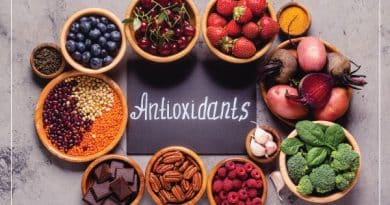Vegetables That Start with C (25 Interesting Ideas)
HurryTheFoodUp is reader-powered. If you click through using links on our site we may earn a small commission at no cost to you.
Whether you’re studying for a pub quiz or a school quiz, this list of vegetables that start with C is sure to get you clued up in no time!
In this concise list, I will not only tell you the common names and all about their roots (hehe!), but also the scientific name too as you never know what those sneaky quiz masters are going to ask!

A list of vegetables could go on forever, there are so many different varieties. There’s the leafy vegetable like you get in a bag of salad, the podded vegetable, which as you can probably guess grows in a pod.
Root vegetables often grow in a variety of colors, not that you’d know as a lot grow under the ground. Stem vegetables often have really long stalks, and did you realise you can even eat certain flower buds?
The world of vegetables is really amazing and I know you’re going to love this list. I’ve also made a list of fruits that start with C and foods that start with C if you are keen to learn even more!
So, get ready to fill up that memory bank,
Here are 25 vegetables that start with the letter C!
Cabbage
Cabbage is a good source of vitamin K, C, and dietary fiber. In 2020 there were 71 million tonnes of cabbage produced worldwide – can you imagine!
Cabbage is a common vegetable that comes in green, white, and red (purple) varieties and it has been mentioned in history books dating back to the Roman Empire.
Like cauliflower, it is part of the Brassica oleracea family.
Caper
The caper bush is also called Flinder’s Rose and capers are the edible bud from this plant. It is a white and pink flowering plant.
Other parts of the caper bush are used in making medicine and cosmetics so we humans really make use of it.
Its species name is Capparis spinosa, and it is mainly found in Mediterranean countries.

Caraway
Caraway is a plant found mainly in Asia, Europe, and North Africa. The seeds of the plant are also commonly known as meridian fennel and Persian cumin (why can’t they stick to one name hey!).
The leaves are feathery similar to the ones that grow from a carrot.
For their small size caraway seeds are actually nutrient-rich, and are especially high in iron, phosphorus, and zinc.
In the United States, caraway is used predominantly in rye bread, but even though the aniseed flavor seeds are used in many things.
This includes cooking and the production of essential oils, the leaves can actually be quite toxic when consumed and can cause vomiting and diarrhoea!
Its species name is Carum carvi.
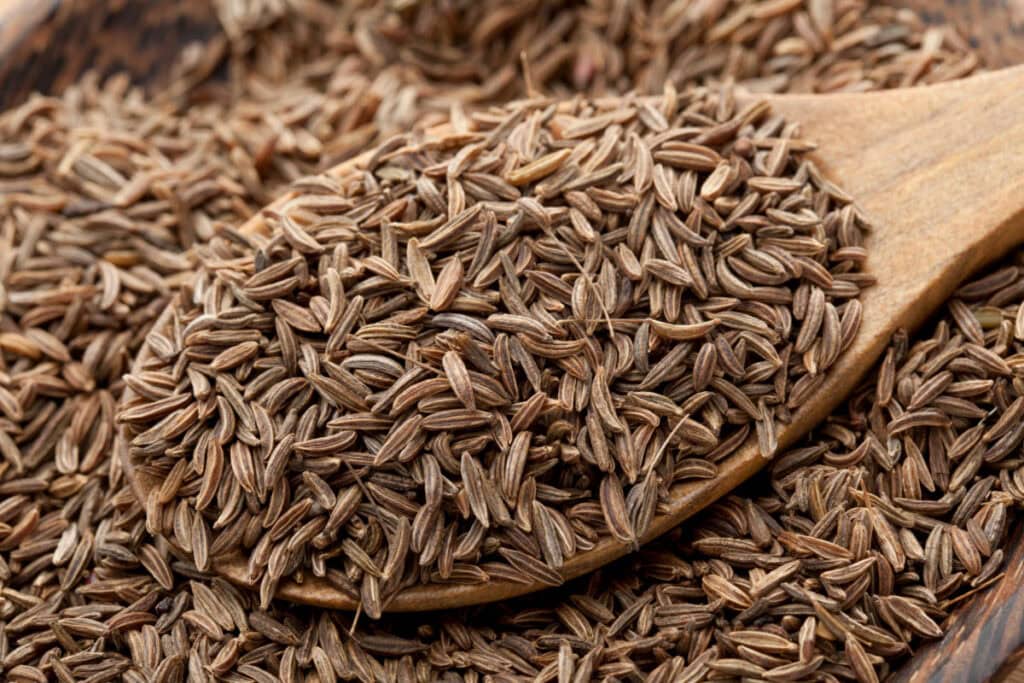
Carrot
Who doesn’t love a carrot, this family favorite has been widely used in cooking for centuries. This root vegetable is mild and sweet in taste.
Although traditionally orange in colour, they also come in white, yellow, purple, black, and red!
The part we commonly eat is known as the taproot, and the leaves and stems can also be eaten.
A favorite of bunnies around the world, carrots have numerous health benefits including being a rich source of beta carotene, however, they don’t actually help you see in the dark unless you already have a vitamin A deficiency.
The species’ name is Daucus carota.
Cassava
Cassava is a woody shrub native to South America.
It is a major staple food in the developing world and cassava starch is probably more commonly recognized as tapioca which is used all over in cooking.
After rice and maize, it is the third biggest source of carbohydrates in the tropics and although a benefit of cassava is how drought-tolerant it is, it shouldn’t be eaten raw.
It is toxic when uncooked, containing levels of cyanide so watch out!
Its species name is Manihot esculenta.

Catsear
This familiar-looking edible flower is often mistaken for a dandelion, hence one of its alternative names the false dandelion.
Unlike the traditional dandelion that is commonly found in lawns all over Europe, all parts of this flower are edible.
It is suggested it is mixed in salads, steamed, or put in stir-frys as it is quite bland in taste on its own.
Interestingly, its root can also be roasted and ground to make a coffee substitute!
Catsear is said to be called so due to the leaves resembling a cat’s ear and its scientific name is Hypochaeris radicata.

Cauliflower
Although they can be a bit tricky to grow, cauliflower are awesome vegetables. They come in four different colors, did you know that? White, green, yellow, and purple!
They are 92% water in their raw state and provide us with 58% of our daily vitamin C needs.
They are part of the same family as lots of familiar vegetables, including broccoli, cabbage, and Brussels sprouts to name but a few which are collectively known as Brassica oleracea.
Cauliflower is a low-calorie vegetable that is often used as a gluten-free alternative to rice.
Celeriac
Celeriac originally came in the Mediterranean basin although it’s now widely consumed.
It is also used in traditional Chinese medicine as it contains a compound called apigenin which has anti-inflammatory properties.
It can be roasted, stewed, and mashed. The bulb is most commonly eaten although the leaves are also full of flavour and used in fine dining.
The latin name is Apium graveolens.
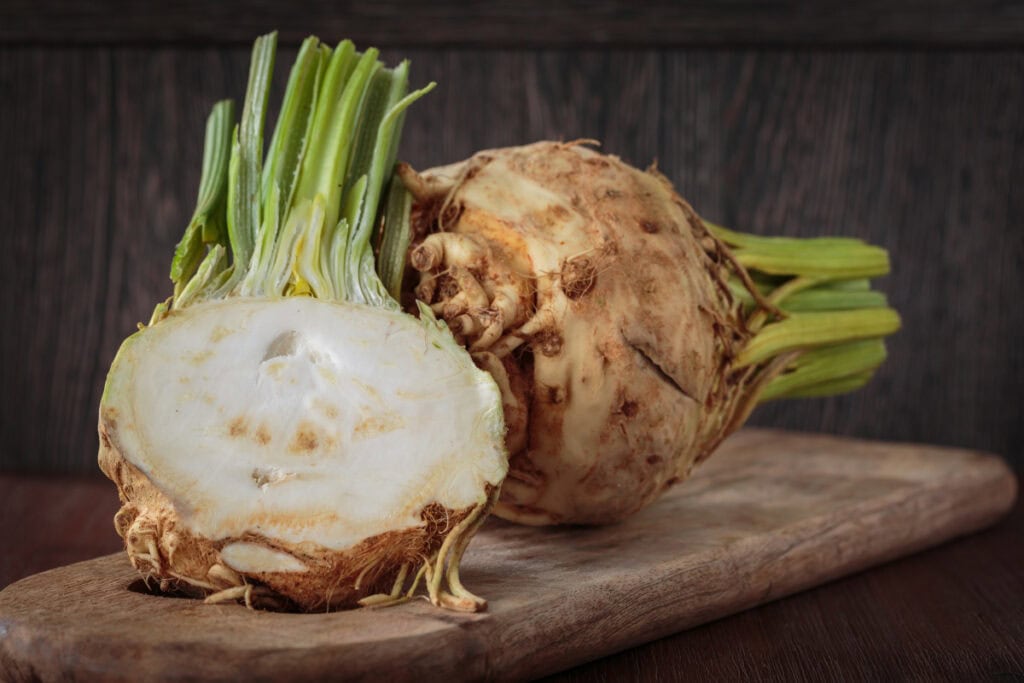
Celery
Celery is what I would call the Marmite of vegetables – you either love it or you hate it! It is a marshland plant and has long fibrous stalks, which is that part we all dunk in hummus when we’re on a health kick.
The leaves can also be eaten and celery seeds are used as a spice. They are ground down to make celery salt, and in 2019 it was popular to drink celery juice if you wanted to detox.
Celery, or Apium graveolens, is 95% water so it’s a great snack choice when watching your weight.
Celtuce
This veggie may sound similar to the common lettuce, but funnily enough, celtuce is actually also called stem lettuce, celery lettuce, or asparagus lettuce and it’s well used all over mainland China and Taiwan.
The large leaves and stems can be eaten raw in salads or pickled, grilled, and roasted. It also has an interesting smoky aftertaste.
Its species name is Lactuca sativa.
Chickpea
The chick pea is really high in protein so they’re an excellent choice for vegetarians and vegans. It is used in lots of Mediterranean and Middle Eastern dishes. It is the main ingredient in houmous which is super tasty.
In 2020, there were 15 million tonnes of chickpeas produced!
Chickpea flour can be used to make a gluten-free alternative to pasta or a batter in dishes like pakora.
The scientific name for it is Cicer arietinum.
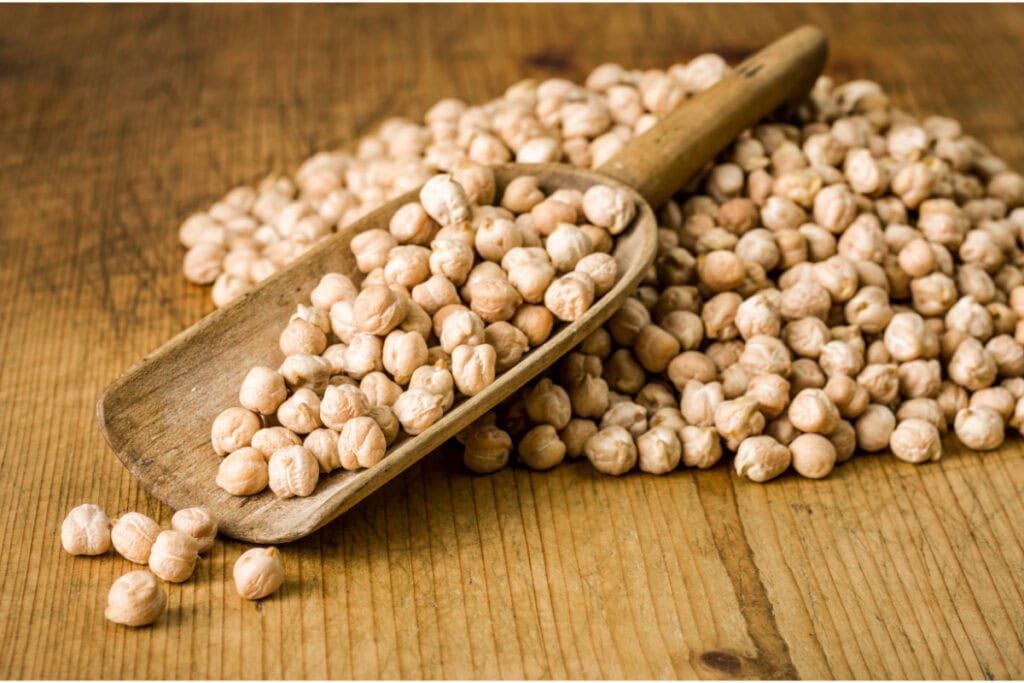
Chickweed
This flowering plant is also known as starwort or stitchwort, but I actually think the scientific name of Stellaria sounds much more pretty.
It’s eaten raw in salads mainly, but it is also a favored treat of finches and other seed-eating birds.
There are over 150 species under the genus of Stellaria.
Chicory
Chicory has bright blue flowers and is a perennial herbaceous plant. Its leaves are mainly used for salads and chicory root is a good source of dietary fiber.
Common chicory has lots of different names including horseweed, ragged sailors, and wild bachelor’s buttons (where do they come up with these names!!!)
The whole perennial plant is edible and it’s also used in traditional medicine. Its species name is Cichorium intybus.
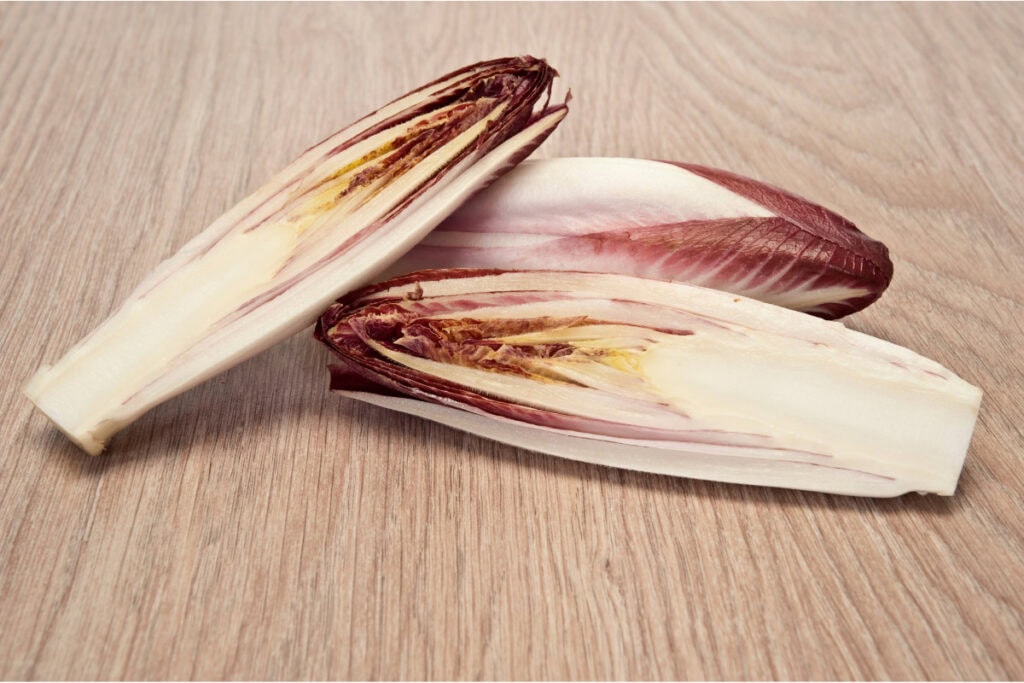
Chili pepper
Chilli peppers, similarly to bell peppers, are under the capsicum family – which is closely related to Nightshade. Although eaten all around the world, they originated in Mexico.
Common chili pepper varieties include cayenne and jalapeno. They give different levels of spice and heat when eaten, especially with the seeds.
Here’s an interesting fact for you! We feel the heat from chilis because capsicum binds to the pain receptors in the mouth and throat of mammals.
However, it is said that birds can’t feel the spiciness of chili peppers so they could eat the hottest ones without even flinching!
Chinese artichoke
This root vegetable is found mainly in Chinese or Japanese cooking and can be eaten raw, dried, pickled, or cooked.
Its leaves can be dried and used for tea, and it is also commonly used in Chinese medicine to help treat colds and pneumonia.
Its species name is Stachys affinis.
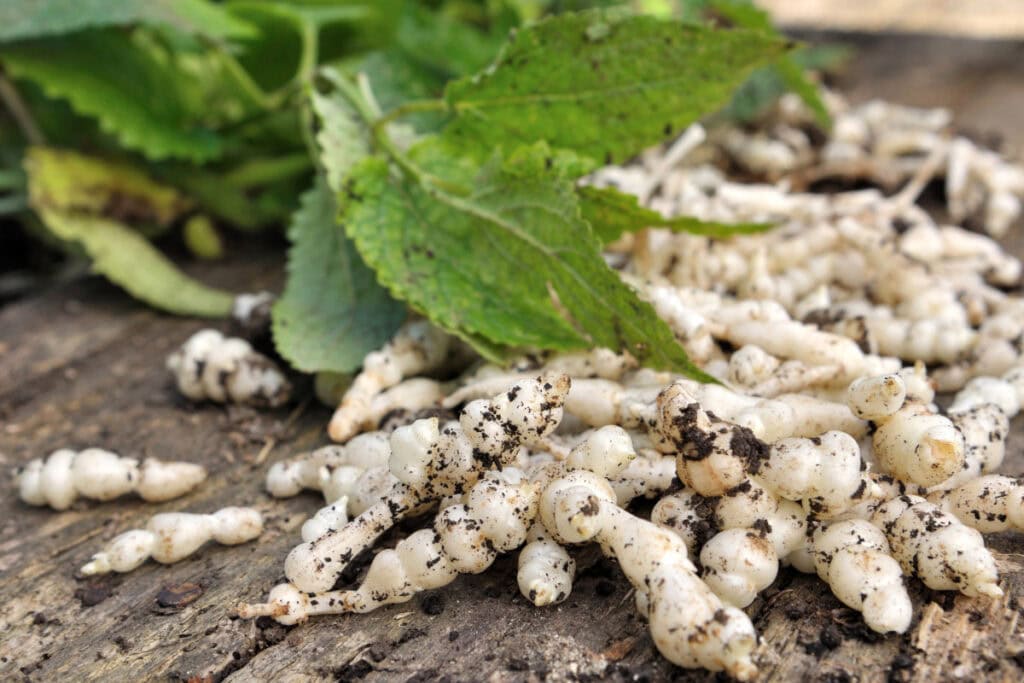
Chinese ginger
Chinese ginger is also commonly called fingerroot and it is from an annual vegetable. It is indigenous to subtropical regions like Malaysia and Indonesia.
It can be used in cooking and traditional medicine. It is also a key ingredient in making the fermented soya bean cake, tempah.
Its Latin name is Boesenbergia rotunda.
Chives
Chives as they are known in the culinary world, stem (excuse the pun!) from a lovely pinky-purple flower that belongs to the Amaryllidaceae family.
Closely related to the onion, spring onion, and shallots, this is a favored herb in many parts of Europe and the Americas.
Interestingly, it is used in parts to repel insects, however, the flowers actually attract bees.
The word chives come from the French cive, which comes from the Latin word cepa, which means onion. Its species name is Allium schoenoprasum.

Collard greens
Collard is a leafy green vegetable that is very similar to cabbage and kale. It has been eaten commonly in the Southern USA and parts of Africa for the last 2000 years going back to Ancient Greek.
It is also in the Brassica oleracea family.
Common bean
Common beans are a podded vegetable. They are also known as French beans and are grown on every continent except Antarctica.
They offer a great source of iron, folate, and vitamin B 6 among other nutrients and they’re full of fiber. This is why beans are so good at filling you up in a nice hearty meal or salad.
Green beans can be steamed, baked in casseroles, boiled, and stir-fried.
Its species name is Phaseolus vulgaris.
Common Purslane
This perennial plant is made up of 93% water and can be eaten raw or cooked. The seeds can be used to make flour and it is mainly consumed throughout Europe, North Africa, the Middle East, Asia, and Mexico.
It has a slightly sour and salty taste and is mainly added to salads or cooked like spinach into soups and stews.
Its species name is Portulaca oleracea.
Corn
Corn, or maize as it’s more readily known originated in southern Mexico. It is a staple cereal grain and production figures have surpassed that of rice and wheat around the world.
It has lots of commercial uses including the production of biofuel, animal feed, corn syrup, corn starch, sweet corn, and popcorn to name a few!
Although you may recognize corn as being bright yellow in color, it is also grown in white and variegated varieties.
Its species name is Zea mays.

Corn salad
Did you know that corn salad is another name for Lambs Lettuce? In the late 18th and 19th centuries, it was often found in London market stalls but it didn’t go into grocery stores until the 1980s!
It has a nutty flavor and green leaves and it’s best to pick it before its starts to flower.
Its species name is Valerianella locusta.
Courgette
Courgette is also called zucchini or baby marrow. Although traditionally dark green in color, this vegetable can also come in a green and white striped or golden yellow color.
Courgette flowers are also edible and are sometimes used to garnish a dish.
There are many ways of eating courgette, it can be spiralized into noodles, grilled into salads, blitzed into soup, or baked into bread.
It’s a really versatile veg that’s also great to get into children as it doesn’t have a strong taste. Its species name is Cucurbita pepo.

Cress
Garden cress is related to watercress and can grow pretty much anywhere.
The word cress comes from the old Germanic cresso for sharp and spicy. It’s a great edible plant and egg and cress sandwiches are commonplace in traditional British afternoon tea.
It’s really interesting how food is used in different parts of the world. Cress seeds are mixed with custard to make a hot drink on the Arabian Peninsula.
Its species name is Lepidium sativum.
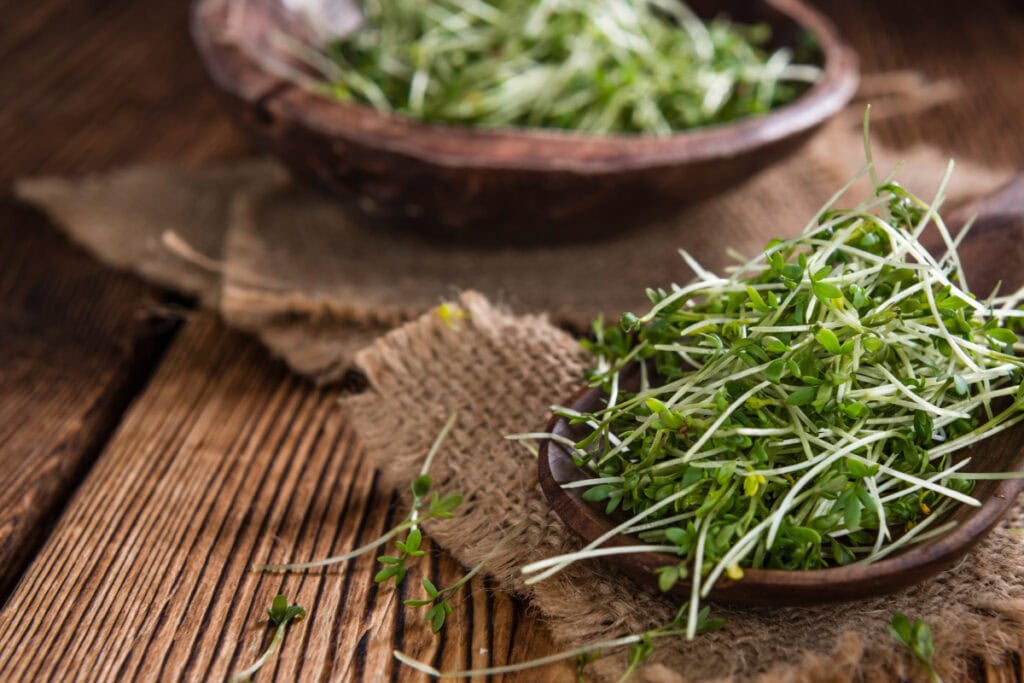
Cucumber
Is it a vegetable or a fruit that is the question? Officially cucumbers are fruit but they are used in many savory dishes as a salad vegetable.
They grow on a vine plant and similarly to courgettes also grow a flower on the end of them. They are 95% water so they are a great snack to keep up hydration levels.
Cucumbers are mentioned as far back in history as the Roman Empire, where Emperor Tiberius is said to have had one every day.
Its species name is Cucumis sativus.
Vegetables That Start with C (25 Interesting Ideas)
Want the kids to learn their veggies? Then this list of vegetables that start with the letter C is for you.
- Cabbage
- Caper
- Caraway
- Carrot
- Cassava
- Catsear
- Cauliflower
- Celeriac
- Celery
- Celtuce
- Chickpea
- Chickweed
- Chicory
- Chili pepper
- Chinese artichoke
- Chinese ginger
- Chives
- Collard greens
- Common bean
- Corn
- Corn salad
- Courgette
- Cress
- Cucumber
So there you have it, who knew there were even 25 vegetables beginning with C! Did you guess them all? Or were there some that caught you by surprise?
I wonder what you found to be the most interesting fact – let me know in the comments below!
If this fascinated you please share it and don’t forget to check out the other blog posts in this series.


